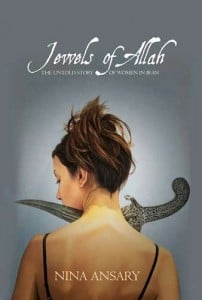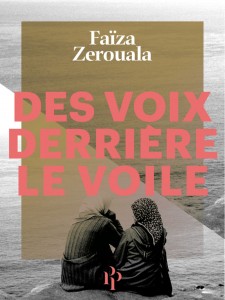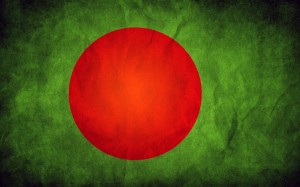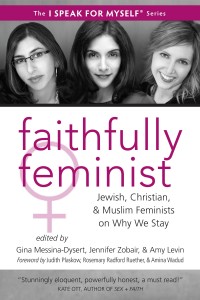Desperate in Dubai, a cheeky exposé novel based on the original blog written by Ameera al-Hakawati (a pseudonym), revolves around the lives of four women who live, love, and labour in the sparkling Gulf city of Dubai.
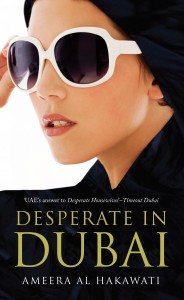
I recently had the chance to catch up with al-Hakawati in Dubai, to chat about her book, her faith, and the politics of anonymous writing as a Muslim woman.
British-born Al-Hakawati says she knew she had to write a book about Dubai the moment she arrived in what she describes as the “craziness and diversity” of the city. She initially chose to write anonymously due to the salacious nature of the book, particularly as she would be writing about Arab and Muslim women in an Arab country. Later on, her anonymity developed into more than a tactic to avoid censorship, and became what she calls a “liberating tool,” allowing her to write at leisure about taboo subjects concerning Muslim women, such as sexuality and extra-marital relationships. She was able to explore the lives of Muslim women, without worrying about what people thought about her as a Muslimah. She has faced some hiccups along the way, with her blog being banned and her books being temporarily taken off the shelves in Dubai.
Al-Hakawati felt it important to delve into aspects of women’s lives that are normally brushed under the carpet – issues like falling in love, dating, secret marriages, getting pregnant, experimenting with drugs, alcohol and men; things which do happen in reality but which Muslims like to believe do not. She writes, not to condone these actions, but to highlight the challenges facing Muslim women in the real world. She did receive a lot of criticism on the blog for writing about Muslims doing “sinful things,” but felt the issues too important to be deterred.
I read the book on the flight home from Dubai, and although it was light reading and at times simplistic or exaggerated, I did enjoy that it cast light upon aspects of Muslim women’s lives that are normally viewed through Orientalist lenses. Fashion, hijab, relationships, sex, and marriage are intertwined and feature throughout the book, and are written in as a normal part of the women’s lives. As a Muslim and a woman herself, al-Hakawati’s voice certainly lends authenticity to the narrative, which revolves around four main female characters, three of whom are Muslim.
Of the three Muslim characters in the book, one is Arab-Emirati, another of Moroccan descent, and the third a British-born Indian. Al-Hakawati chose these identities as a representation of the diversity of Muslim women, whom she feels are often lumped into the same category despite varying cultural, linguistic and national differences. The fourth character is a Lebanese Christian.
Al-Hakawati chose to write about Emirati women because a book about Dubai would be incomplete without them. Her character is a confident and rebellious young woman, constrained by her culture but always finding ways to get around it. Often viewed as exotic creatures, Emirati women are brought down to earth in al-Hakawati’s writing, which avoids falling into the usual “oppressed Arab women” storyline, despite delving into issues of patriarchy and the subjugation of women in the Gulf.
The headscarf – that seemingly ever-politicized piece of cloth – is a symbol of faith, culture and fashion in the book. For Nadia (the Moroccan), it is part and parcel of her religious identity and she manages to have a great fashion sensibility about it. For Lady Luxe (the Emirati), the headscarf, together with the abaya is a cultural necessity dictated as appropriate public decorum, and not as a symbol of piety, which al-Hakawati feels many Muslims fall into the trap of believing. Lady Luxe, despite not having any spiritual connection to hijab, has great business acumen and is an up-coming abaya designer. Sugar (the British Indian), with her strong religious convictions, does not wear the hijab, but would like to; she feels it might enhance her faith, but is too encumbered about the way she would look to do so.
As these women go about their lives, searching for love, money and happiness, religion is always present, in varying degrees of importance. I found it refreshing that religious symbols like mosques, the call to prayer, the prayer itself, hijab, halal food, and so on, are written with a sense of casualness, as not the usual air of mystery that surrounds it in much fictional work.
Whilst Desperate in Dubai is not a literary masterpiece, I enjoyed the book for its fun and spicy nature, particularly as I could relate to some of the struggles faced by the characters, as only a Muslimah can. Al-Hakawati admitted to having serious doubts about her work, often asking herself if this kind of writing is compatible with her religious convictions – coming to the realization that she was writing to highlight the everyday challenges facing Muslim women, not to titillate. I think she did so well, and adds value to the dearth of authentic literature about contemporary Muslim women.


